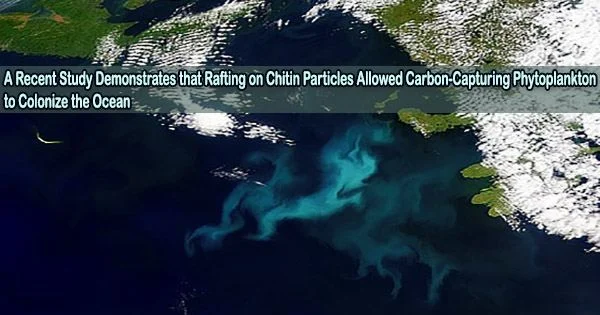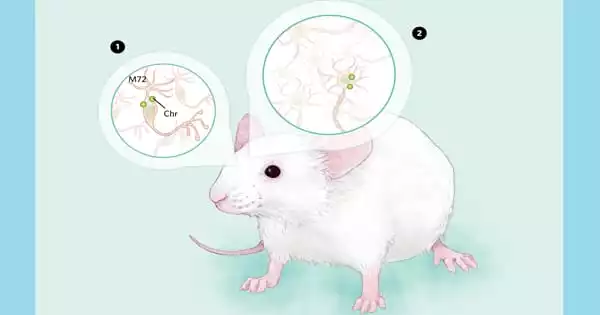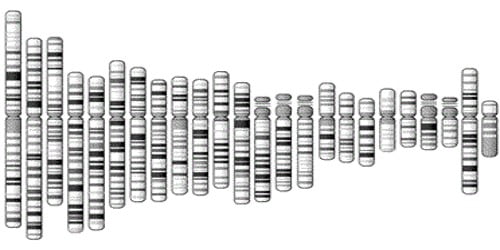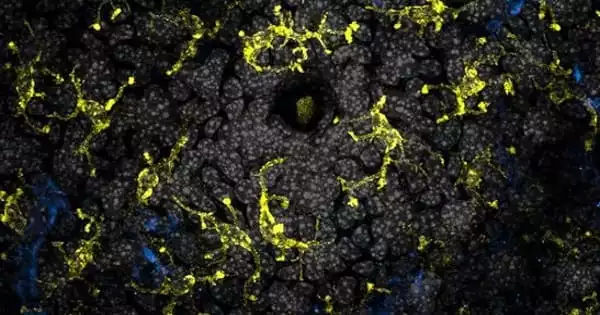An unseen floating forest of bacteria that resemble plants covers the entire ocean. The microscopic organisms utilize sunlight to absorb carbon dioxide from the atmosphere as they drift. Collectively, these phytoplankton, or photosynthesising plankton, take almost as much CO2 as all of the terrestrial forests in the globe.
Prochlorococcus, the most prevalent phytoplankton in today’s oceans, is an emerald-tinged free-floater that contributes a quantifiable portion of their carbon-capturing power.
But Prochlorococcus didn’t always inhabit open waters. The microbe’s ancestors probably stayed nearer to the coasts, where there were plenty of nutrients and community microbial mats on the seafloor, which allowed for the survival of life.
How then did descendants of these coastal dwellers end up as the photosynthesizing powerhouses of the open oceans today?
MIT scientists believe that rafting was the key. In a recent study, it is suggested that Prochlorococcus ancestors developed the capacity to grip onto the degraded chitin particles of prehistoric exoskeletons. The microorganisms rode the flakes as they passed, using the flakes as rafts to travel farther out to sea. These chitin rafts may have also supplied the microorganisms with vital nutrients to fuel and sustain them during their journey.
Generations of bacteria may have had the chance to evolve new skills to adapt to the open ocean after becoming so fortified. They would have eventually progressed to the point where they could abandon ship and live as the modern-day free-floating ocean inhabitants.
“If Prochlorococcus and other photosynthetic organisms had not colonized the ocean, we would be looking at a very different planet,” says Rogier Braakman, a research scientist in MIT’s Department of Earth, Atmospheric, and Planetary Sciences (EAPS). “It was the fact they were able to attach to these chitin rafts that enabled them to establish a foothold in an entirely new and massive part of the planet’s biosphere, in a way that changed the Earth forever.”
Braakman and his collaborators present their new “chitin raft” hypothesis, along with experiments and genetic analyses supporting the idea, in a study appearing this week in PNAS.
MIT co-authors are Giovanna Capovilla, Greg Fournier, Julia Schwartzman, Xinda Lu, Alexis Yelton, Elaina Thomas, Jack Payette, Kurt Castro, Otto Cordero, and MIT Institute Professor Sallie (Penny) Chisholm, along with colleagues from multiple institutions including the Woods Hole Oceanographic Institution.
If Prochlorococcus and other photosynthetic organisms had not colonized the ocean, we would be looking at a very different planet. It was the fact they were able to attach to these chitin rafts that enabled them to establish a foothold in an entirely new and massive part of the planet’s biosphere, in a way that changed the Earth forever.
Rogier Braakman
A strange gene
The tiniest photosynthesizing organisms on the earth are classified as picocyanobacteria, which includes two major groups, one of which is Prochlorococcus. The other category is Synechococcus, a closely similar microbial species that is widely distributed in freshwater and oceanic ecosystems. Both organisms make a living through photosynthesis.
But it turns out that some Prochlorococcus strains can adapt to different lifestyles, especially in dimly light areas where photosynthesis is challenging to maintain. These microbes are “mixotrophic,” using a mix of other carbon-capturing strategies to grow.
When seeking for evidence of mixotrophy, Chisholm’s group discovered a shared gene in multiple contemporary strains of Prochlorococcus. The gene was responsible for encoding the capacity to degrade chitin, a carbon-rich substance found in the sloughed-off shells of arthropods including insects and crustaceans.
“That was very strange,” says Capovilla, who decided to dig deeper into the finding when she joined the lab as a postdoc.
To determine whether Prochlorococcus can in fact break down chitin in a meaningful way for the new study, Capovilla performed experiments. Previous laboratory research revealed that the chitin-degrading gene was present in Synechococcus and low-light-adapted Prochlorococcus strains. The gene was missing in Prochlorococcus inhabiting more sunlit regions.
In the lab, Capovilla introduced chitin particles into samples of low-light and high-light strains. She found that microbes containing the gene could degrade chitin, and of these, only low-light-adapted Prochlorococcus seemed to benefit from this breakdown, as they appeared to also grow faster as a result.
The ability of the microorganisms to adhere to chitin flakes was another feature that particularly intrigued Braakman, whose research focuses on the evolution of metabolic processes and how they have influenced Earth’s biosphere.
“People always ask me: How did these microbes colonize the early ocean?” he says. “And as Gio was doing these experiments, there was this ‘aha’ moment.”
Braakman wondered: Could this gene have been present in the ancestors of Prochlorococcus, in a way that allowed coastal microbes to attach to and feed on chitin, and ride the flakes out to sea?
It’s all in the timing
The scientists turned to Fournier, a specialist in tracing genes across species of microorganisms over time, to investigate this novel “chitin raft” concept. In 2019, Fournier’s lab established an evolutionary tree for those microbes that exhibit the chitin-degrading gene. From this tree, they noticed a trend: Microbes start using chitin only after arthropods become abundant in a particular ecosystem.
The gene would need to have been present in Prochlorococcus ancestors soon after arthropods started colonizing marine settings for the chitin raft hypothesis to hold true.
The scientists studied the fossil record and discovered that aquatic arthropod species multiplied in number in the early Paleozoic, or around 500 million years ago. That also happens to be the moment when the chitin-degrading gene first occurs in Prochlorococcus and Synecococchus’ shared relatives, according to Fournier’s evolutionary tree.
“The timing is quite solid,” Fournier says. “Marine systems were becoming flooded with this new type of organic carbon in the form of chitin, just as genes for using this carbon spread across all different types of microbes. And the movement of these chitin particles suddenly opened up the opportunity for microbes to really make it out to the open ocean.”
Chitin’s emergence may have been especially advantageous for microbes that thrived in dim environments, such as the coastal seafloor where it is believed that ancient picocyanobacteria formerly existed. To these microbes, chitin would have been a much-needed source of energy, as well as a way out of their communal, coastal niche.
According to Braakman, the rafting microorganisms were strong enough to evolve further ocean-dwelling characteristics once they were at sea. The organisms were then prepared to “take the plunge” and transform into the free-floating, photosynthesizing Prochlorococcus that are present today millions of years later.
“In the end, this is about ecosystems evolving together,” Braakman says. “With these chitin rafts, both arthropods and cyanobacteria were able to expand into the open ocean. Ultimately, this helped to seed the rise of modern marine ecosystems.”
















